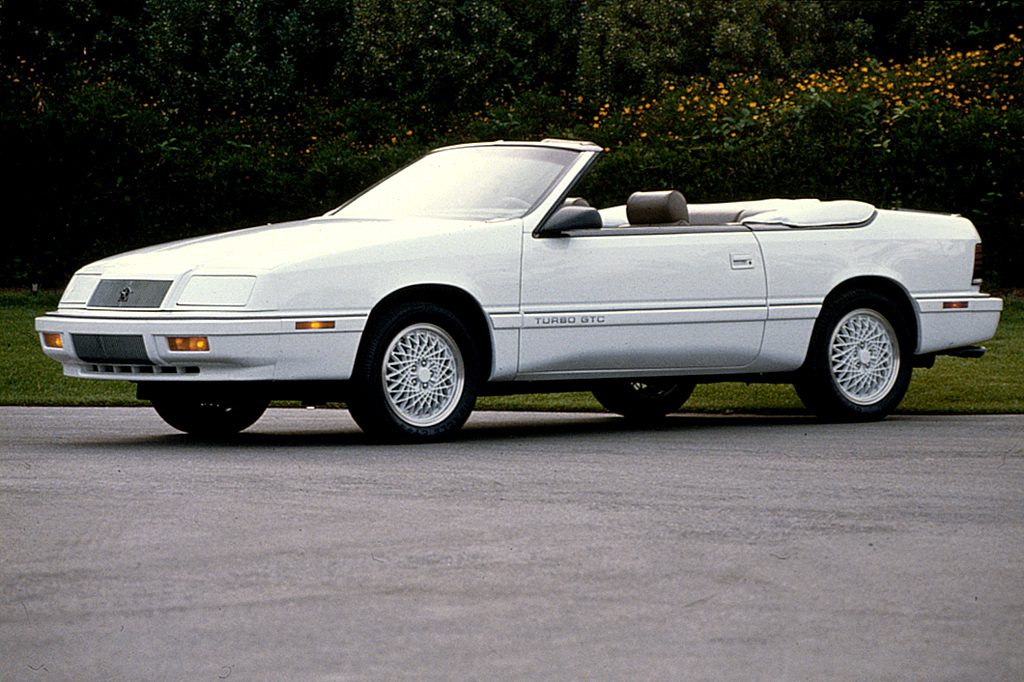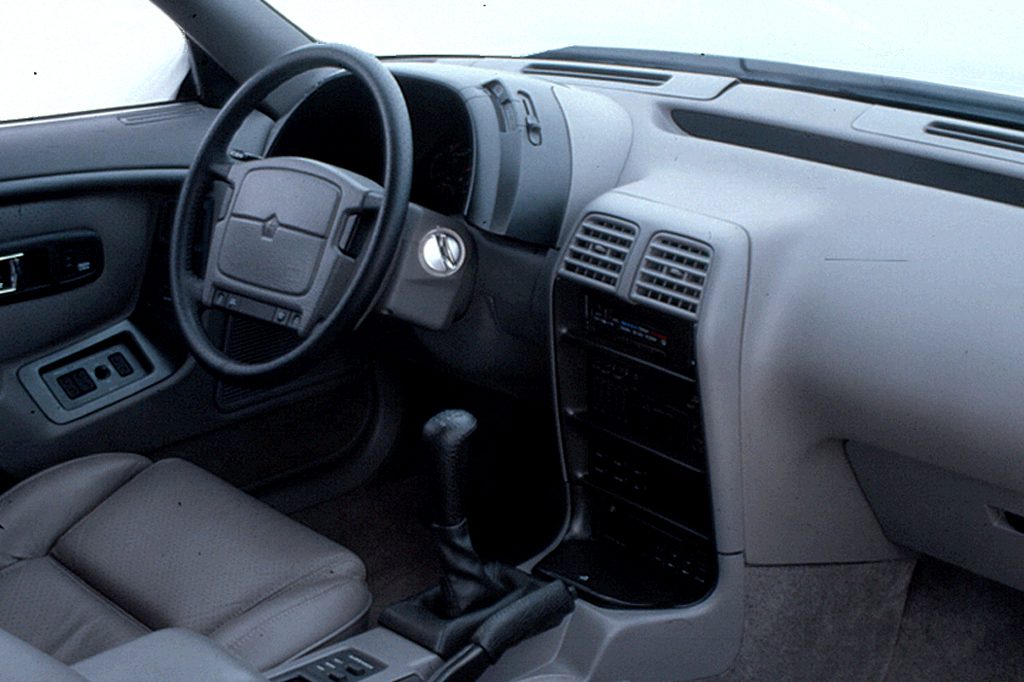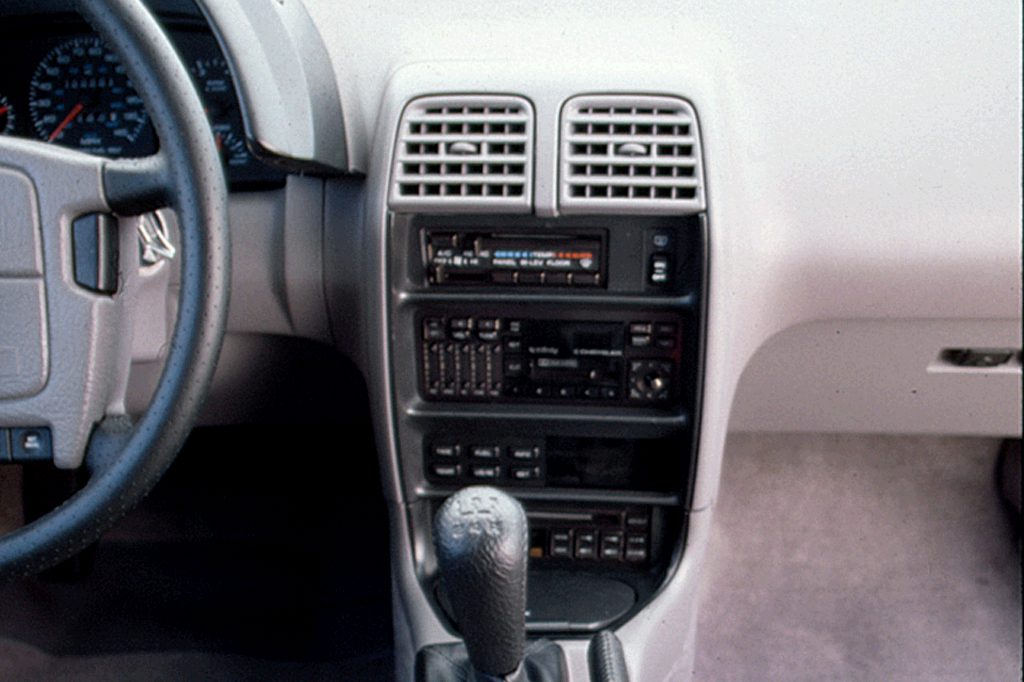| Sporty/performance car; Built in USA |
|
|
| Good condition price range: $1,000 – $2,200* |

1990 Chrysler LeBaron 2-door convertible

1993 Chrysler LeBaron GTC 2-door coupe

1993 Chrysler LeBaron GTC 2-door convertible

1990 Chrysler LeBaron interior

1990 Chrysler LeBaron interior
| Pros: |
|
| Cons: |
|
Though not devoid of flaws, LeBarons still look sharp and perform reasonably well–at least with the smooth V6 engine.
Overview
Back in 1987, Chrysler’s LeBaron coupe and convertible changed radically–and the new shape was destined to stick around through 1995. By the ’90s, LeBaron was the country’s top-selling convertible. Only 4-cylinder engines were available in early seasons, both turbocharged and naturally aspirated. LeBarons added a Mitsubishi-built V6 option for 1990. A 4-speed automatic was offered, too. Coupes and convertibles came in Highline or Premium trim, along with sportier GT and GTC variants. Also for ’90, the performance-oriented GTC gained an optional electronic variable-damped suspension, which allowed the driver to alter shock absorber damping. At the same time, variable-nozzle technology gave the GTC’s 2.2-liter Turbo IV engine quicker response. Ever since 1989, LeBarons have had a standard driver-side airbag.
Yearly Updates
| 1991 LeBaron Coupe/Convertible For 1991, the LeBaron GTC got the 3.0-liter V6, and a 152-horsepower 2.5-liter turbo became optional. The GT was dropped, but GTC specifications were similar. The former “performance” suspension was downgraded to “sport,” and 4-wheel disc brakes became an option. |
| 1992 LeBaron Coupe/Convertible Antilock braking became available for ’92, including rear disc brakes instead of the usual drums. Convertibles also got standard rear shoulder belts. |
| 1993 LeBaron Coupe/Convertible Facelifting for ’93 included exposed headlamps and a new grille, plus combi nation red/amber taillamps. Turbo engines departed, leaving only the base 4-cylinder and the V6. |
| 1994 LeBaron Coupe/Convertible Only a GTC convertible returned for 1994, with a V6 engine and dual airbags–plus a “one-price” sales strategy. Base and LX versions bit the dust. Coupes were gone for good, too, ready for replacement by the new-for-1995 Sebring. |
| 1995 LeBaron Coupe/Convertible For its final season, the GTC convertible continued as the only LeBaron model. A year later, a Chrysler Sebring would serve as its open-topped successor. |
